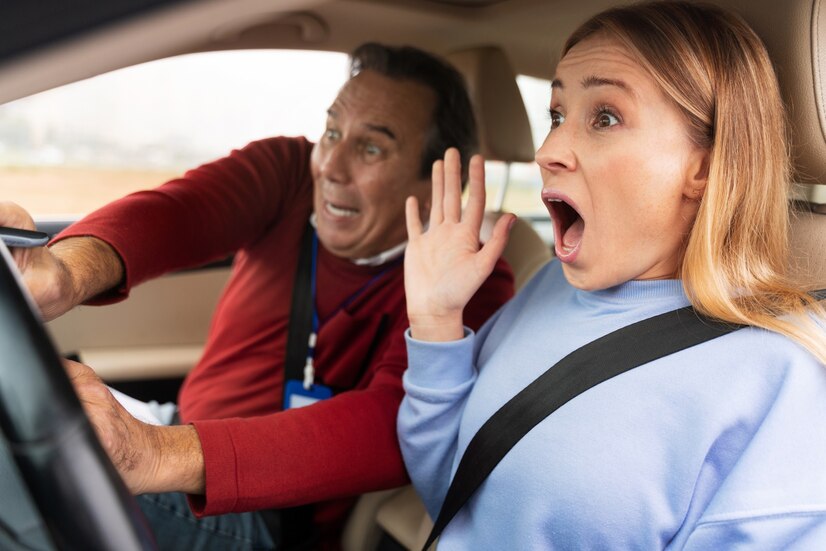Impaired driving is a concern that tragically claims lives every year. In Fresno, where everyone relies on the roads each day, the worry of impaired driving hangs over safety. While most people associate driving with alcohol and drugs, there is another factor that often goes unnoticed- distraction. In today’s world, distractions during driving have become increasingly common and present a significant threat to road safety.
For those in Fresno who find themselves affected by the consequences of impaired driving, be it through distraction or other factors, seeking legal support is crucial. A Fresno car accident attorney can provide invaluable assistance in navigating the legal complexities associated with such incidents. This post aims to raise awareness about the hazards of driving, provide insights into types of distractions, and offer practical tips on how to avoid them.
Understanding Forms of Distractions:
Distractions can take different forms, both external and internal. External distractions arise from sources outside the vehicle, such as billboards, pedestrians, or events happening on the roadside. These distractions divert our attention away from the road and significantly increase the risk of accidents.
Internal distractions refer to factors within the vehicle itself that divert our focus while driving. One prevalent internal distraction involves engaging in conversations with passengers or using devices like phones or GPS systems while operating a vehicle. Other examples include eating, adjusting vehicle controls such as air conditioning or radio settings, applying makeup, or attending to children in the backseat.
The Numbers Don’t Lie:
Recent studies from traffic safety organizations have shown that on a regular basis, approximately nine lives are lost, and over 1,000 people are injured due to distracted driving incidents in the United States alone. It’s truly shocking to think that all of these accidents could be prevented if drivers simply minimized distractions while behind the wheel.
Cell Phone Usage and its Impact:
One major contributor to impaired driving is the use of cell phones. In today’s world, where smartphones have become a part of our lives, many individuals struggle to resist answering calls or responding to notifications while driving. However, when we examine these behaviors closely, we find some eye-opening statistics. Engaging in text messaging increases the risk of accidents by up to 23 times compared to drivers who aren’t distracted.
Another significant distraction is our increasing reliance on navigation and GPS devices. While these systems are designed to help us find our way, they also demand attention. Adjusting settings or studying the route can divert our focus from the road and potentially lead to accidents. That’s why it’s crucial to set up your navigation system before you start your journey or safely pull over if any adjustments need to be made.
Common Misconceptions about Multitasking:
In today’s society, multitasking has almost become the norm. However, when it comes to driving, it poses significant risks. Contrary to popular belief, humans are not capable of multitasking: we can only shift our attention quickly between different tasks. Research indicates that attempting to juggle tasks simultaneously hampers our ability to perform each task effectively. Since driving demands concentration and quick responses to road changes, it is essential to avoid engaging in any activities while behind the wheel.
Reducing Distractions
Minimizing distractions while driving is crucial for ensuring everyone’s safety on the road. The following tips can significantly help in reducing distractions:
1. Keep your phone out of reach: Store your phone in the glove compartment in the backseat, where you won’t be tempted to reach for it while driving.
2. Utilize hands-free technology: If you need to answer calls, consider using hands-free technology like Bluetooth headsets or voice-activated virtual assistants such as Siri or Google Assistant.
3. Plan ahead: Set up your GPS system and adjust vehicle controls before starting your journey.
4. Limit conversations: Try to minimize conversations with passengers as they may divert your attention from the task at hand- driving.
5. Try not to eat or groom yourself while driving: Instead, it’s better to set aside times for meals or personal grooming when you’re not behind the wheel.
In conclusion, it is important for all drivers to acknowledge the risks associated with driving that go beyond alcohol and drugs. By understanding these risks and taking measures to minimize distractions, we can create roads for ourselves and everyone else on the road. Remember, the responsibility to avoid distractions while driving rests in our hands, so it is crucial that we prioritize safety and give our attention to the task at hand and navigating the road.











